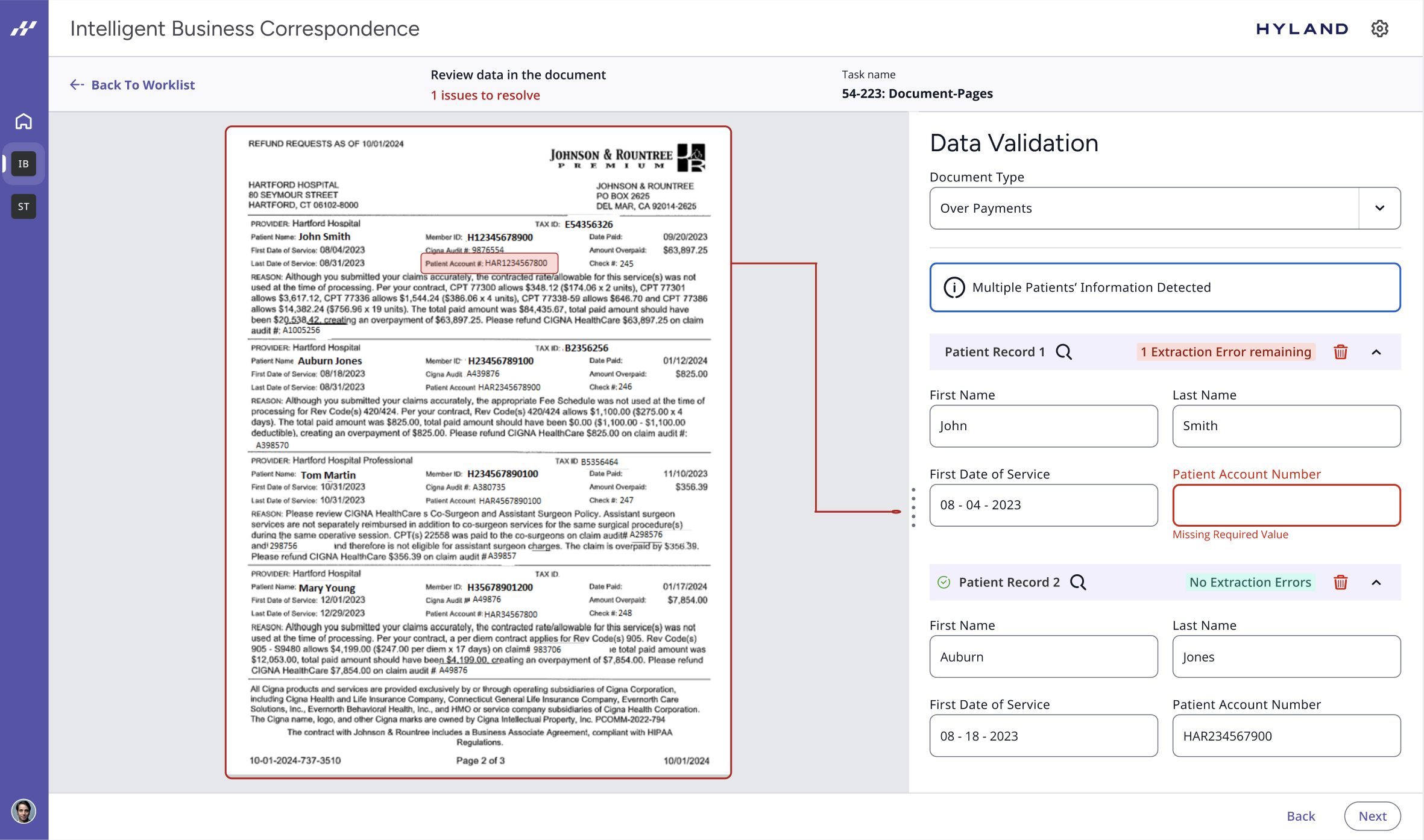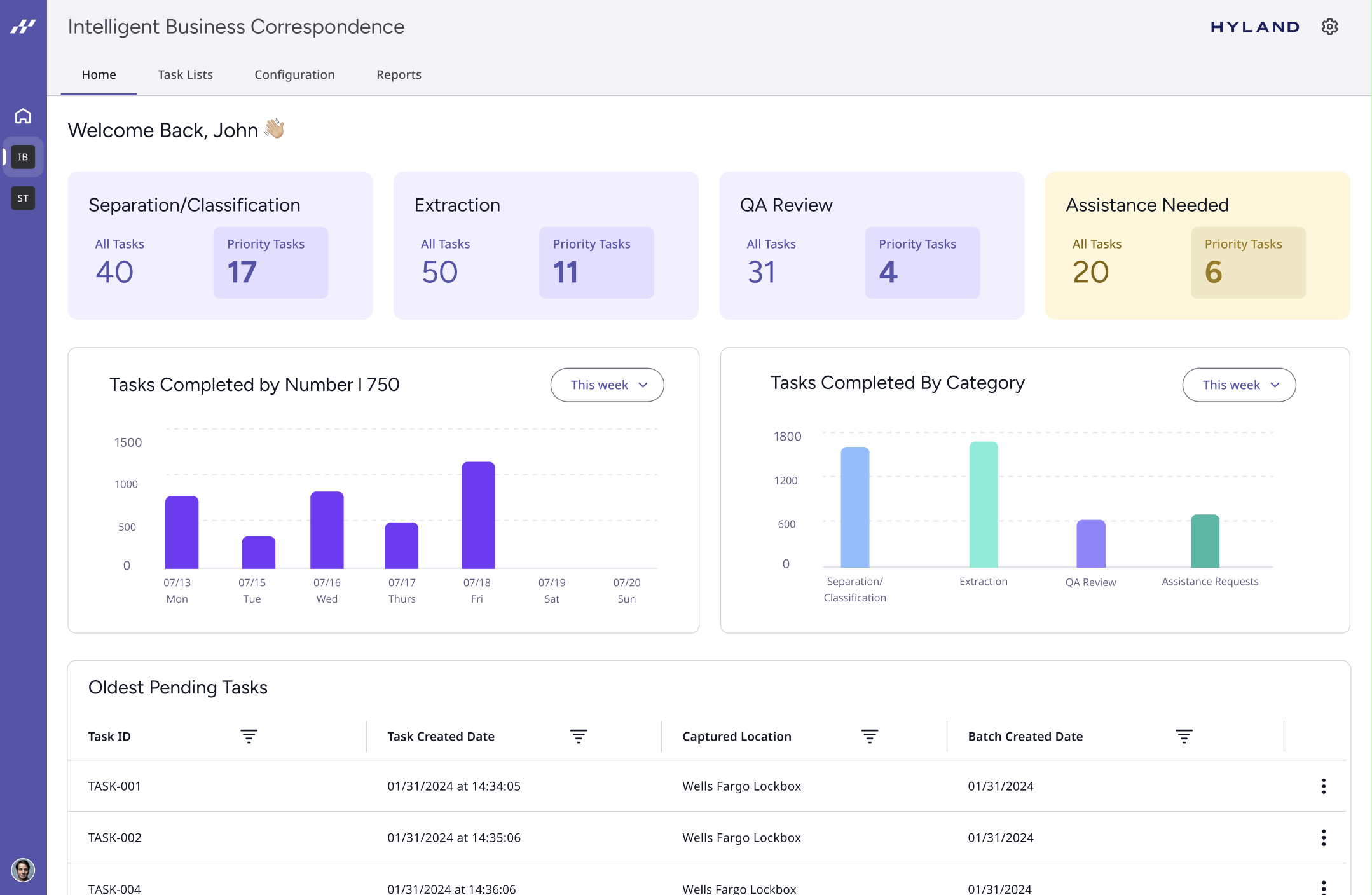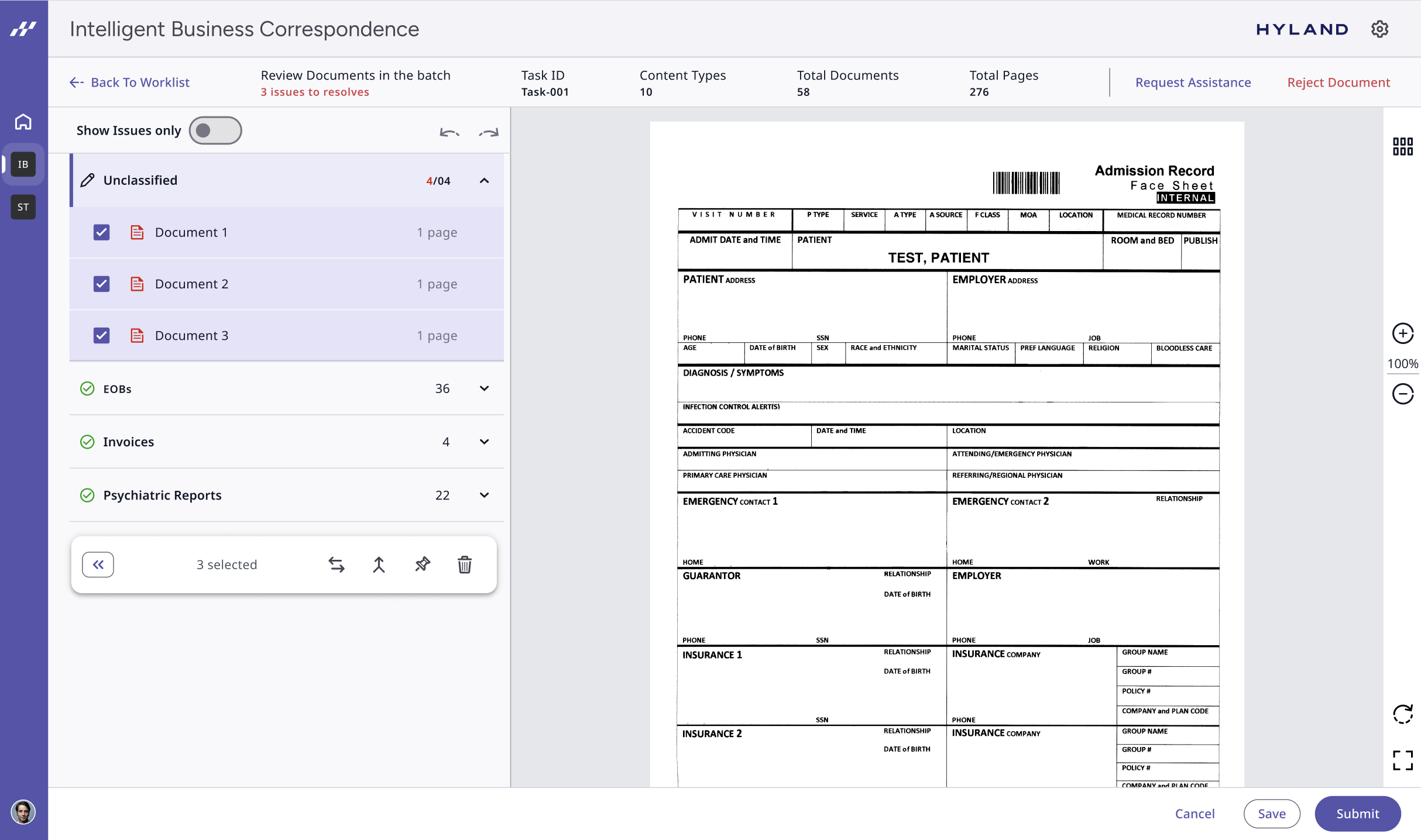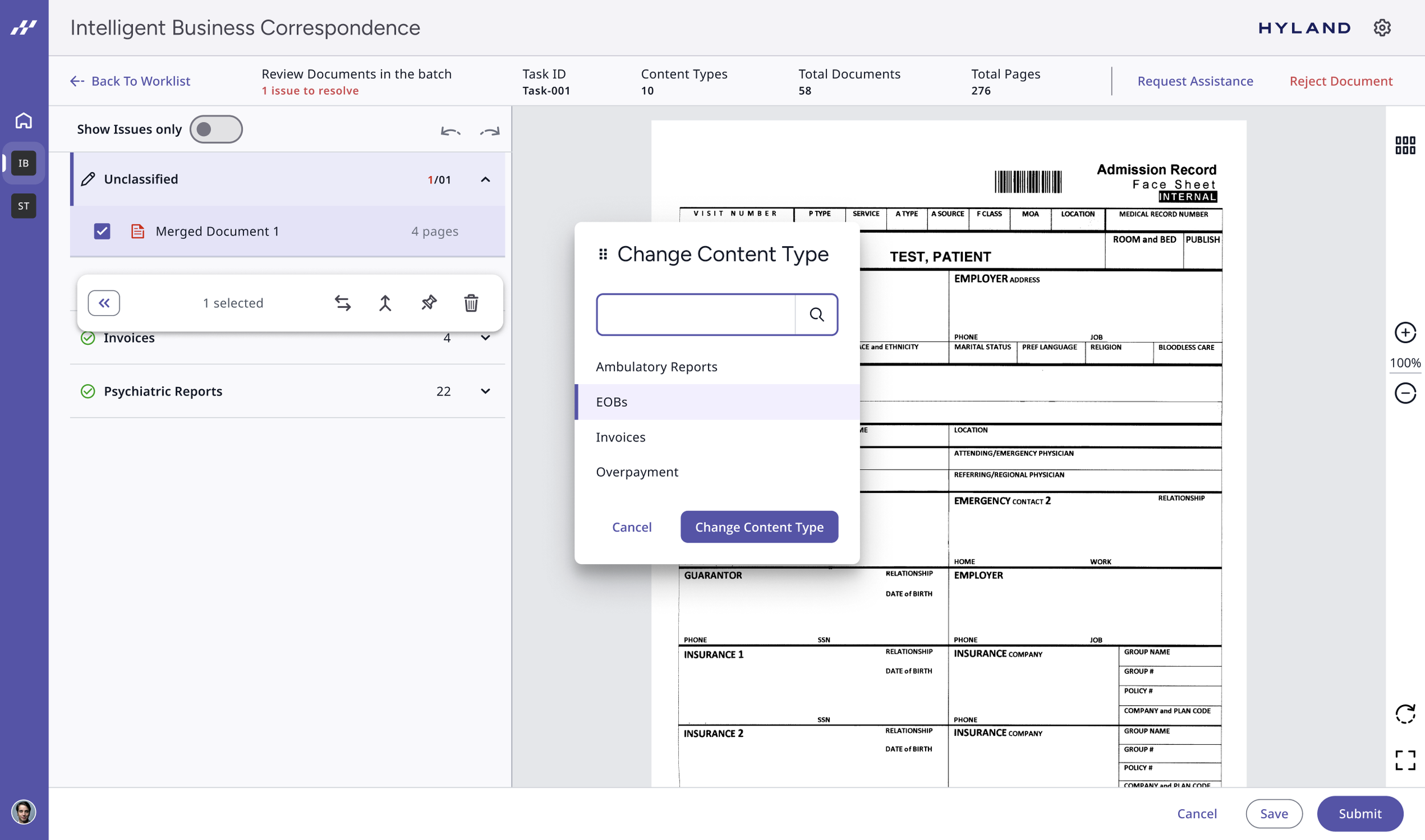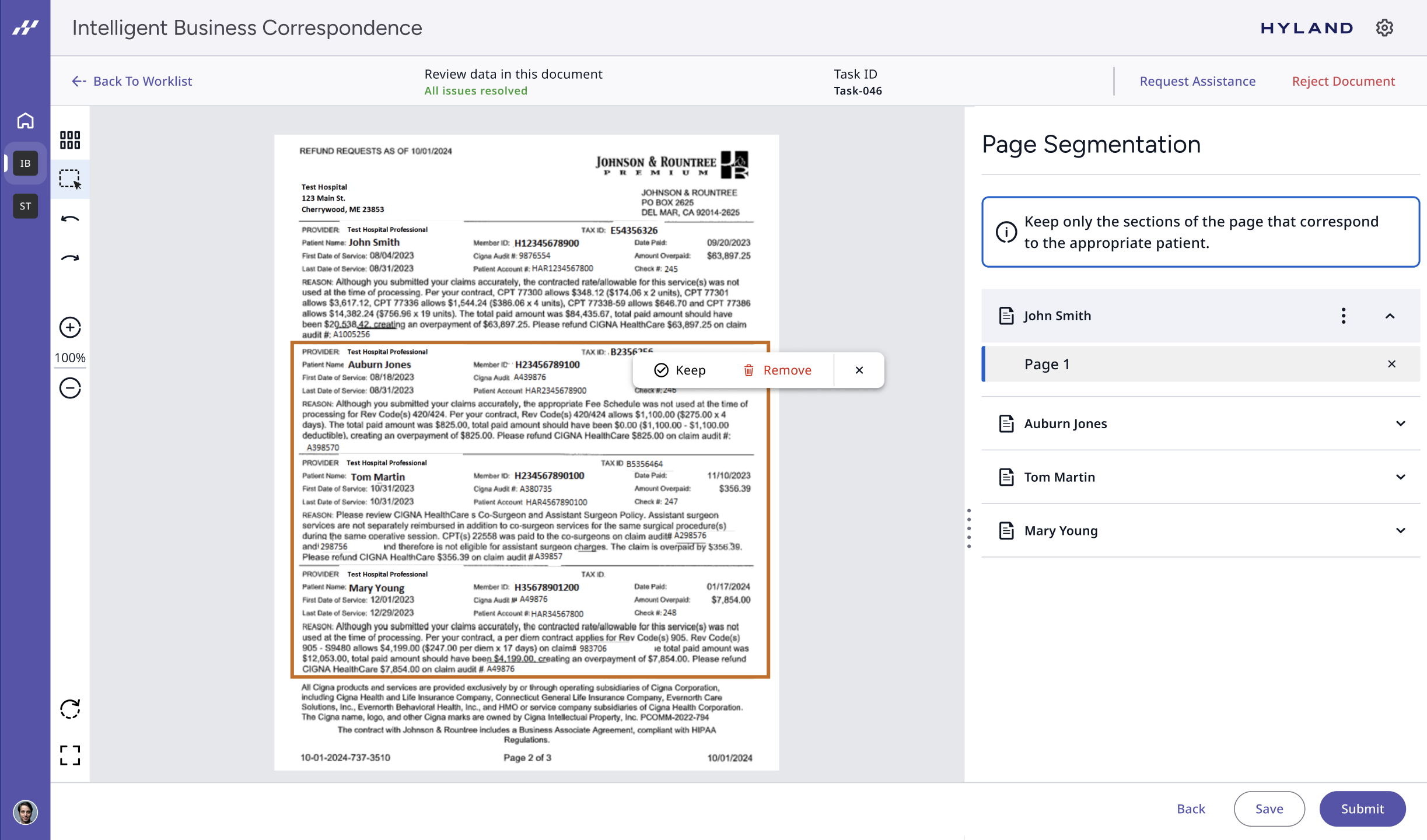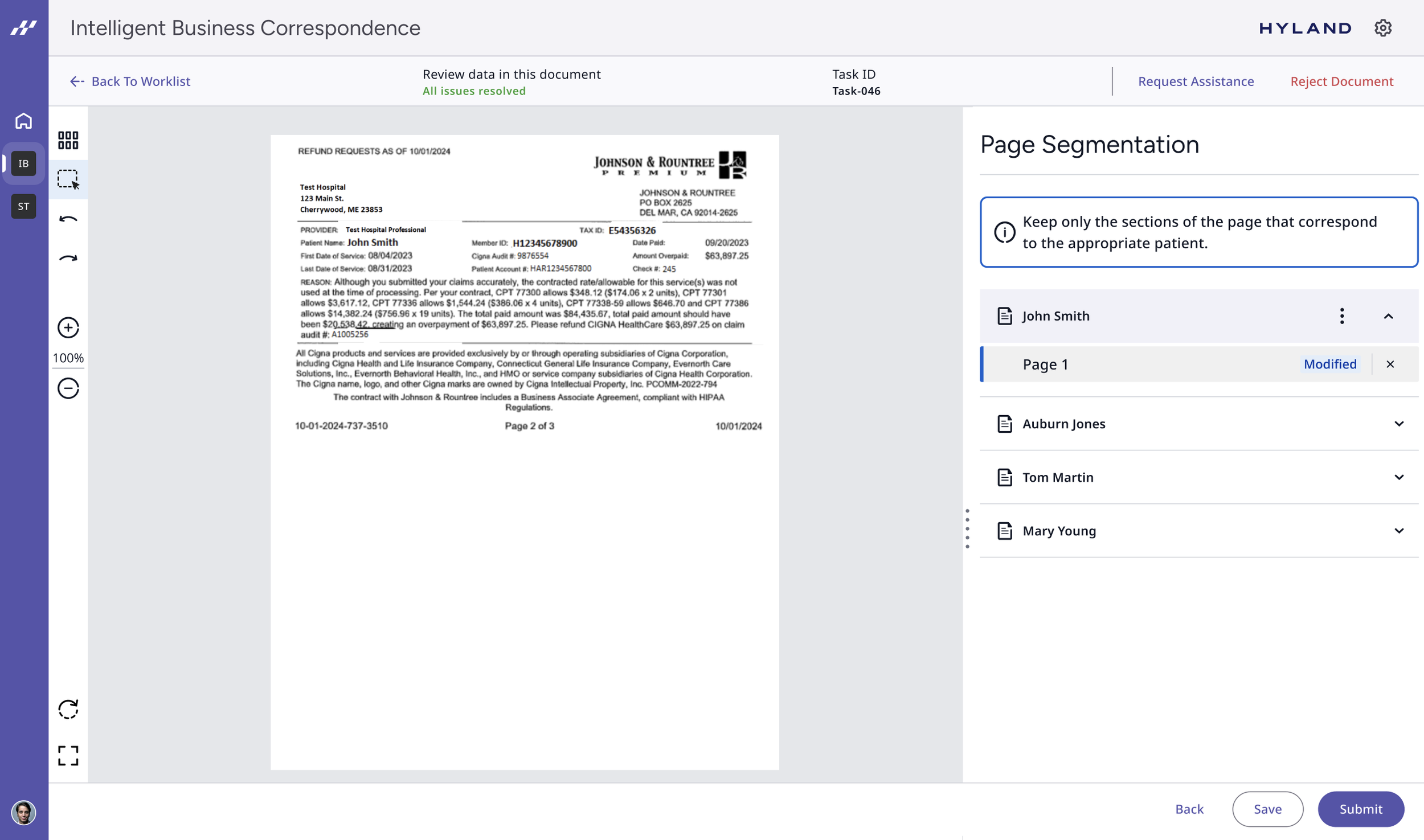From Chaos to Clarity: Efficient Intelligent Document Processing for Healthcare
The Intelligent Business Correspondence solution is an end-to-end intelligent document-processing platform that ingests, classifies and routes revenue-cycle correspondence—payments, patient statements, remittance advice and other mail—for Patient Financial Services (PFS) teams, while integrating with bank-managed lockboxes.
Project Tags
Deliverables
User Research
Visual Design
User Flows
Design Presentation
User Testing
Year
2025
Team
1 UX Designer
1 Design Manager
1 User Researcher
2 Product Managers
Duration
6 months
Role
Product Designer
IMPACT 💸
The solution is expected to generate at least $12 million in revenue upon launch.
Testing and Results
Tested interactive prototype with 6 Health Information Management (HIM) professionals
100 % task completion: each user processed a document without or minimal assistance
All participants said the tool would significantly speed up their daily document-processing tasks
Personal Takeaways
Close collaboration with the dev team on this high-impact project taught me to balance bold design ideas with technical constraints, making smart compromises to deliver maximum value.
PROBLEM
Manual processing of lockbox documents with missing data is draining PFS teams’ time and revenue-cycle efficiency
Why do we need to work on this?
Business Goals
Shorten the revenue cycle by speeding correspondence handling so payments post sooner.
User Goals
Handle fewer documents manually so staff focus on complex cases and avoid overtime.
Reduce exception-handling costs through better automation, lowering manual touches per document.
Differentiate with seamless lockbox integration to make Hyland the preferred IDP vendor for finance leaders.
Resolve exceptions fast to cut scavenger hunts in Epic and accelerate cash flow.
User Interviews informed us Labor-Intensive Mail Prep Eats Up Hours Every Day
A researcher was brought onto the project to conduct 3 user interviews with customers using the Brainware application, as well as 1 interview with an external customer. The goal was to understand their workflows, identify what was working well, and pinpoint areas for improvement.
Manual Document Prep
“We spend more time separating and bar-coding pages than actually indexing them”
Context-Switching Overhead
“I flip between OnBase and Epic dozens of times an hour just to find missing patient info.”
Too Many Touches
“If automation could trim even one human step, we’d save hours every week”
Journey Mapping helped Revealed Workflow Steps & IDP tool requirements
CHALLENGE
Early Design review meetings revealed that the Design Must Leverage the Existing IDP Framework used in another solution
In the early design concepts meeting with the stakeholders, I learned due to tight resources we had to reuse an existing IDP framework, leaving limited room for customization. My task became adapting the design within those constraints while still addressing the specific needs of healthcare users. Here are a few early concepts that were appreciated but I had to move away from them
Fig. Completed Tasks did not need to be displayed
Fig. I proposed a straightforward divider line for page separation—an idea that had already earned strong user praise in a sister application.
Fig. A viewer-centric page-separation feature twas recommended to streamline implementation for the engineering team
Fig. Stakeholders appreciated the concept but asked that we extend the existing IDP framework from a sister product to minimize new-task planning
PIVOT AND FINAL DESIGN
Focusing on core tasks helped us ship a scalable IDP MVP through active engineer-designer collaboration
I adjusted my designs to prioritize essential functionality, such as document classification and metadata entry, while deferring advanced features for future updates. Additionally, I collaborated with the base IDP team to propose enhancements that would make the solution more scalable with the company’s broader needs.
Combining Page Separation and Classification in one view speeds up action-panel workflows
Automatic page separation handles most documents, but any pages the system can’t classify are flagged as issues for an admin to review and resolve.
Labeling low-confidence fields lets users quickly resolve Extraction Errors
Page Segmentation lets admins isolate and store each patient’s data when multiple patients appear within a single document
A toolbar option lets users keep or remove page sections, saving only relevant information to the selected patient’s record. When a section is removed, the rest of the page shifts up—a behavior user research preferred over the static redaction option.
Flexible QA sampling lets admins set a default review percentage and override it for specific instances
In QA Review the system rechecks classification and separation automatically—you simply confirm first-pass accuracy. In the configuration screen, you can set the percentage of documents sent to QA and override the default rate for specific categories.
Next Steps
Create Reporting Dashboards for more insights for FHS.
Improve the design based on customer feedback for V2.
Next Project

